Panther - quick start
Panther is a rugged Unmanned Ground Vehicle (UGV) platform, engineered for demanding outdoor environments. Equipped with high-profile wheels and four powerful BLDC motors, plus an IP54/66-rated chassis, it’s designed to tackle the toughest challenges. Panther’s versatility enables seamless integration of LIDARs, 3D cameras, manipulators, and other components through its V-slot mounting rail, available power ports, and extensive communication interfaces. With open-source ROS and ROS 2 drivers, along with a robust suite of software examples, Panther makes developing your product or research project both simple and intuitive.
- Unboxing
- Software Configuration
Since the video above was published, the LED animation behavior and the Wi-Fi setup procedure have changed. Check the current meaning of LED Animations and how to configure the RUTX access point.
If you don't have Panther yet, you can get it from the online store.
- Manual: This is a quick-start guide. The complete Panther Manual is available here.
- Users with a Robotic Arm: If your Panther includes a manipulator, do not follow this guide. Please check the Manipulator Manual Section, which contains essential safety instructions.
Unboxing
Package Content
The standard package contains:
- Panther robot
- Accessories box with:
- Charger
- Logitech F710 gamepad
- RUTX11 accessories
The content of the package may vary depending on the additional elements bought alongside Panther.
Unboxing Robot
The Panther robot is shipped by default in a wooden box, such as the one shown below. Unboxing the robot is quick and simple and can be done in a few simple steps. Follow the instructions below when you receive your robot.
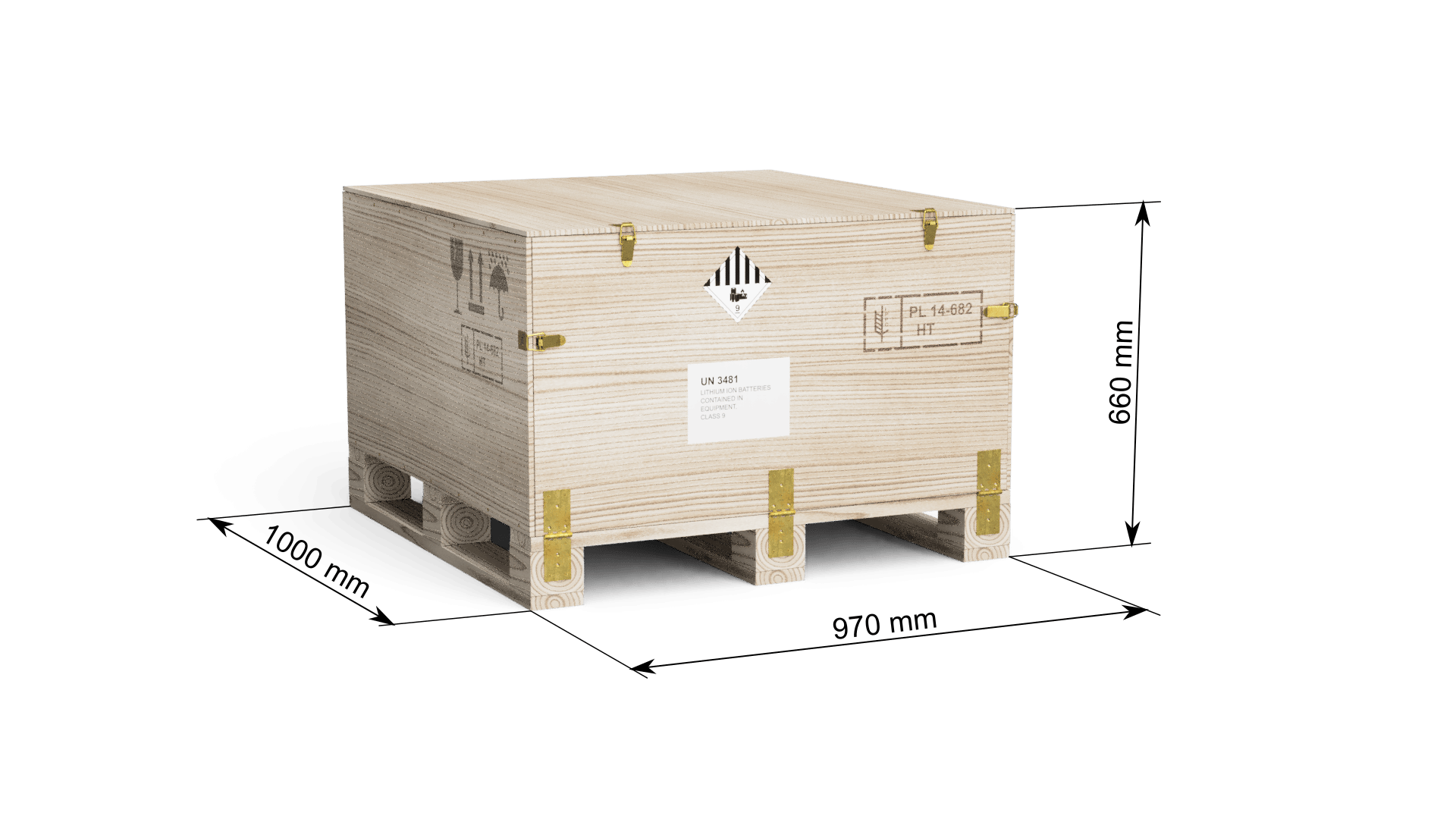

First, unlock and open the box's front side.
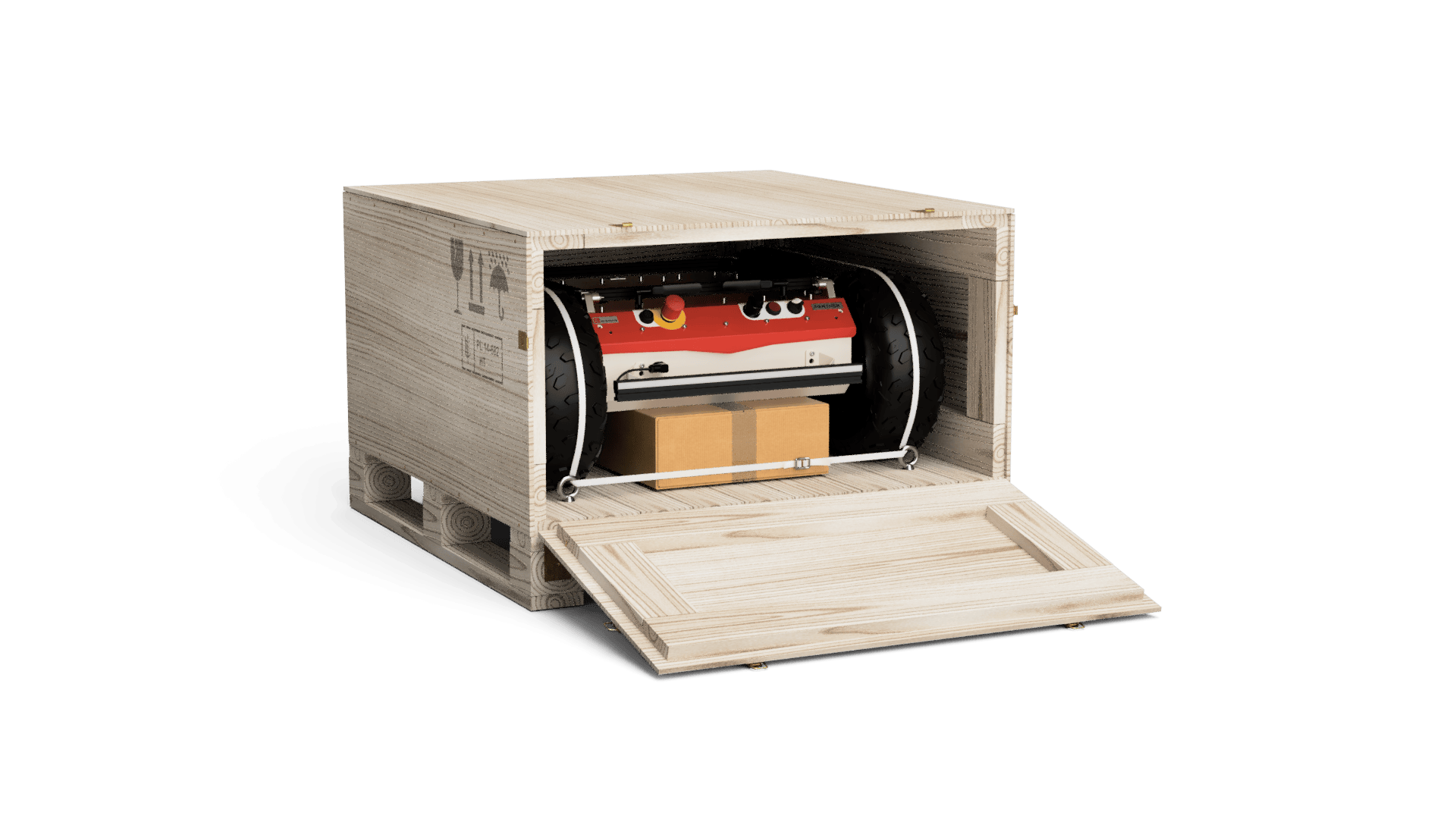
Check if it is possible to drive the robot out of the box (it may require removing some elements first, like the accessories box). If so, you can continue with the next step. Otherwise, go to the Disassembling the Box section.
Cut the white stripes holding the robot and remove additional kits, such as the accessories box, etc. Now, you can pull the robot out of the box using its bumper.
If you feel resistance when pulling Panther out, go to the stage of disassembling the box. Otherwise, the extracted elements may be damaged.
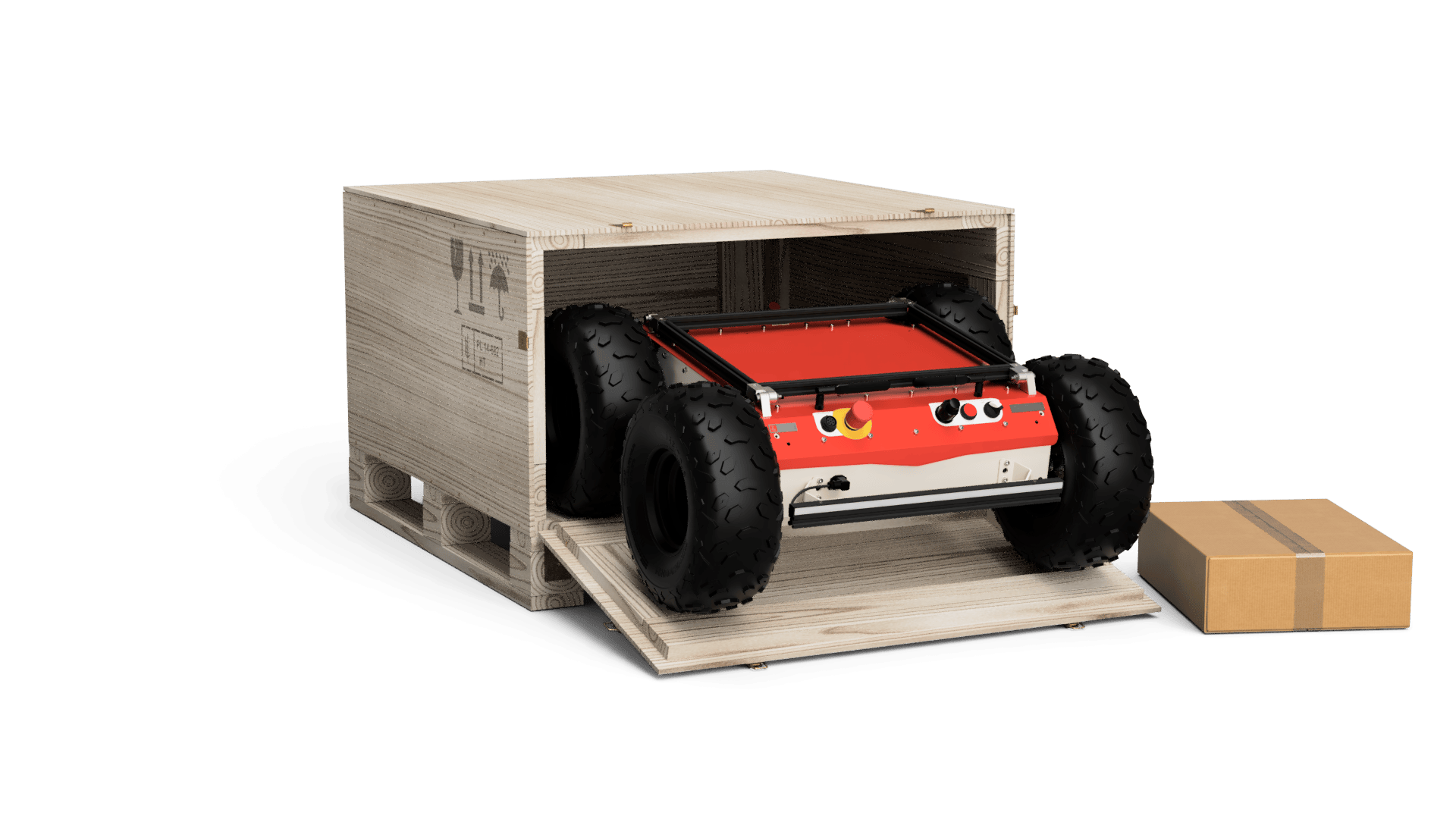
Disassembling the Box
If it is impossible to drive the robot out, it is necessary to partially disassemble the box. Unscrew the screws holding the box's upper part to its bottom, as shown below. Then, carefully remove the box's upper part.
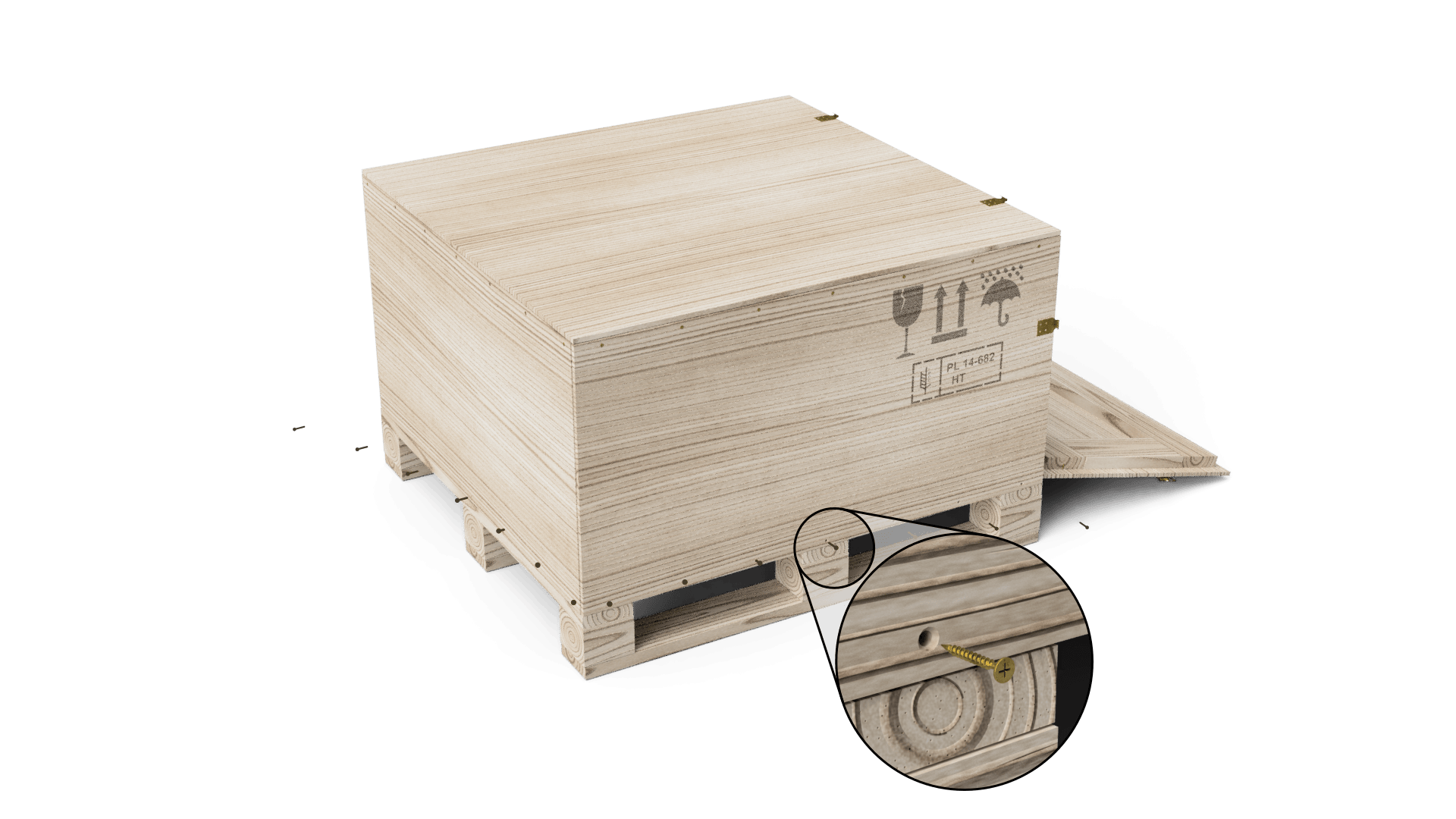
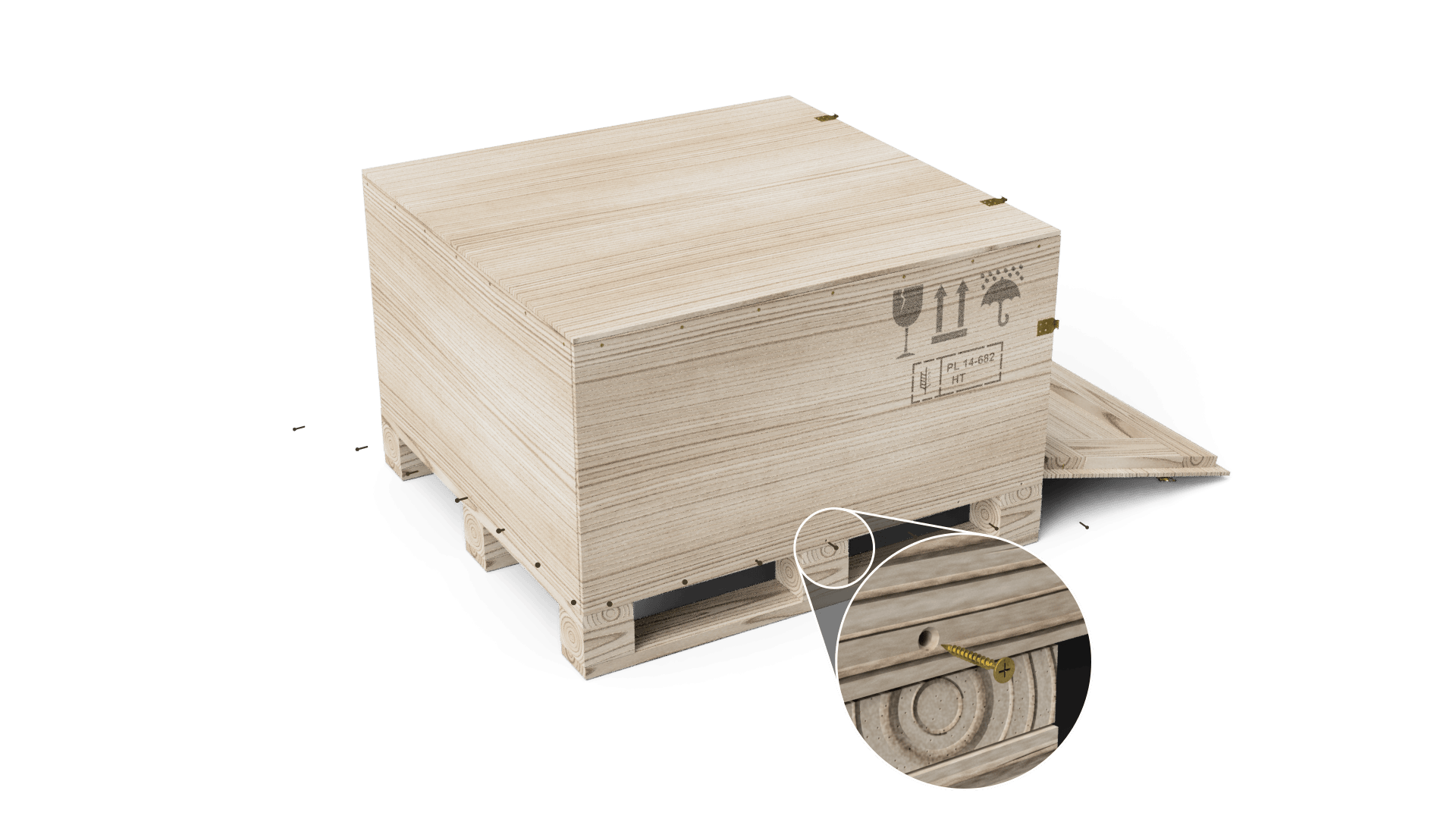
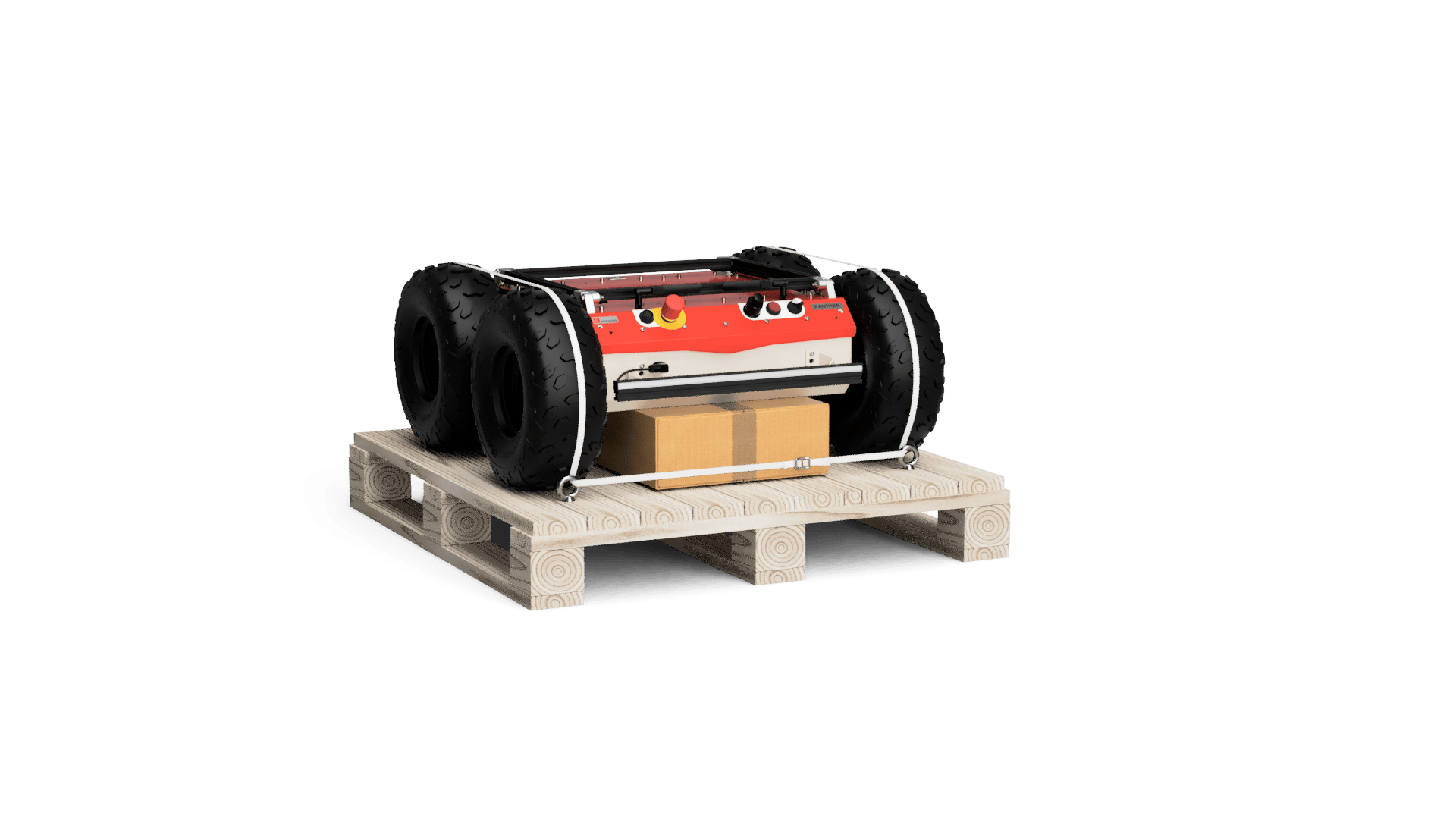
Cut the white stripes holding the robot and remove additional kits, such as the accessories box, etc. Now you can safely move the Panther off the platform.
Quick Demo
We know that you would really like to read the Quick Demo section now, but your safety is the most important thing.
A brief safety information
- Please read the Safety Instructions first.
- If you are not sure how something works, please read the Panther manual.
- Please remember that the mechanical Emergency Button is available on the robot as well as software one in the WebUI (on the screen) and the Gamepad, but in some cases, you may not be able to use them quickly enough to stop the robot before causing damage.
- A detailed description of the safety features is available in the Safety section.
- Panther v1.2
- Panther v1.0 - v1.06
Here is a very basic demo that allows you to use your Panther for the first time without coding:
Rotate the two-position Main Switch to the ON position. Push the Power Button for 1 second, a red light on the Power Button, and the LED panels on the Bumpers (called Bumper Lights) will light up. Wait for Wi-Fi to come up:
SSID: Panther_<serial_number>
PASS: husarion
- ROS 2
- ROS
Connect to robot Wi-Fi and open the WebUI joystick available in your browser at 10.15.20.2:8080/ui. It allows you to manually control your robot and manage the E-stop.
Use the WebUI joystick carefully, as Panther is quite a heavy robot with powerful motors. Especially during a first run, be prepared to push the Emergency Button rapidly if needed.
Connect to Wi-Fi and open the WebUI joystick available in your browser at 10.15.20.2:8000. It allows you to manually control your robot and manage the E-stop.
When the robot is booted correctly, you should see red lights flashing. Now you can unlock the Emergency Button and reset E-stop using WebUI. Bumper Lights should start flashing green.
Use the WebUI joystick carefully, as Panther is quite a heavy robot with powerful motors. Especially during a first run, be prepared to push the Emergency Button rapidly if needed.
Here is a very basic demo that allows you to use your Panther for the first time without coding:
Unlock the Emergency button and set the power switch to the right (it is a 3 pose switch, set to the 3rd pose), and then wait for Wi-Fi to come up:
SSID: Panther_<serial_number>
PASS: husarion
Connect to Wi-Fi and open the WebUI joystick available in your browser at 10.15.20.2:8000. It allows you to manually control your robot and manage the E-stop.
When the robot is booted correctly, you should see red lights flashing. Now you can reset E-stop using WebUI. Bumper Lights should start flashing green.
Use the WebUI joystick carefully, as Panther is quite a heavy robot with powerful motors. Especially during a first run, be prepared to push the Emergency Button rapidly if needed.
Connecting Husarion UGV to Wi-Fi Network
To use Wi-Fi effectively, an active Internet connection is required. The robot comes with a built-in router, allowing you to configure it as a Wi-Fi client. This setup enables the router to connect to an external network and share Internet access with all devices on the local network (LAN).
RUTX11
To begin configuring the Wi-Fi network, first connect to the robot's network. The network name follows the format <robot-name>_<serial-number> (e.g., panther_r2d2). Next, open a web browser and navigate to http://10.15.20.1. Log in using the following credentials:
- Username:
admin - Password:
Husarion1!orHusarion1for older robots
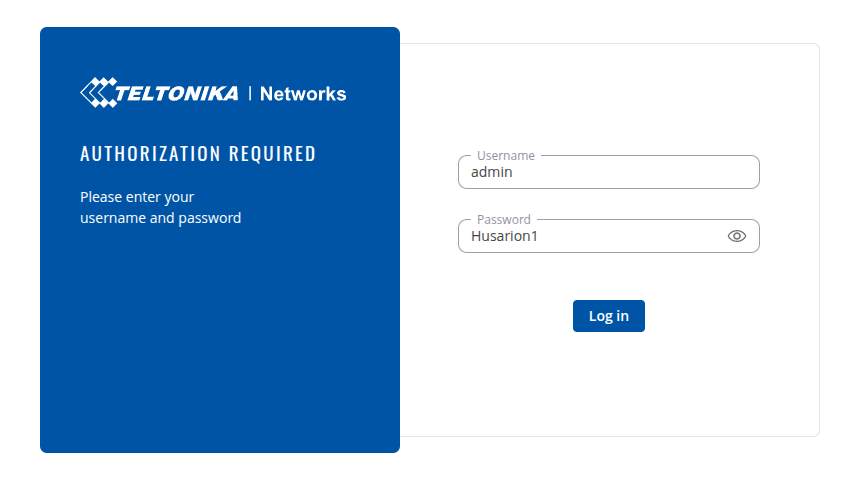
After logging in, you will see the router configuration panel. This manual is based on firmware version RUTX_R_00.07.06.1, which is the default version for this router.
To connect to a Wi-Fi network, navigate to Network → Wireless → SSIDs. Next edit Multi AP SSID.

Under the Access Points section, click Add, then configure the SSID and Password of your WiFi network. You can add multiple WiFi networks.
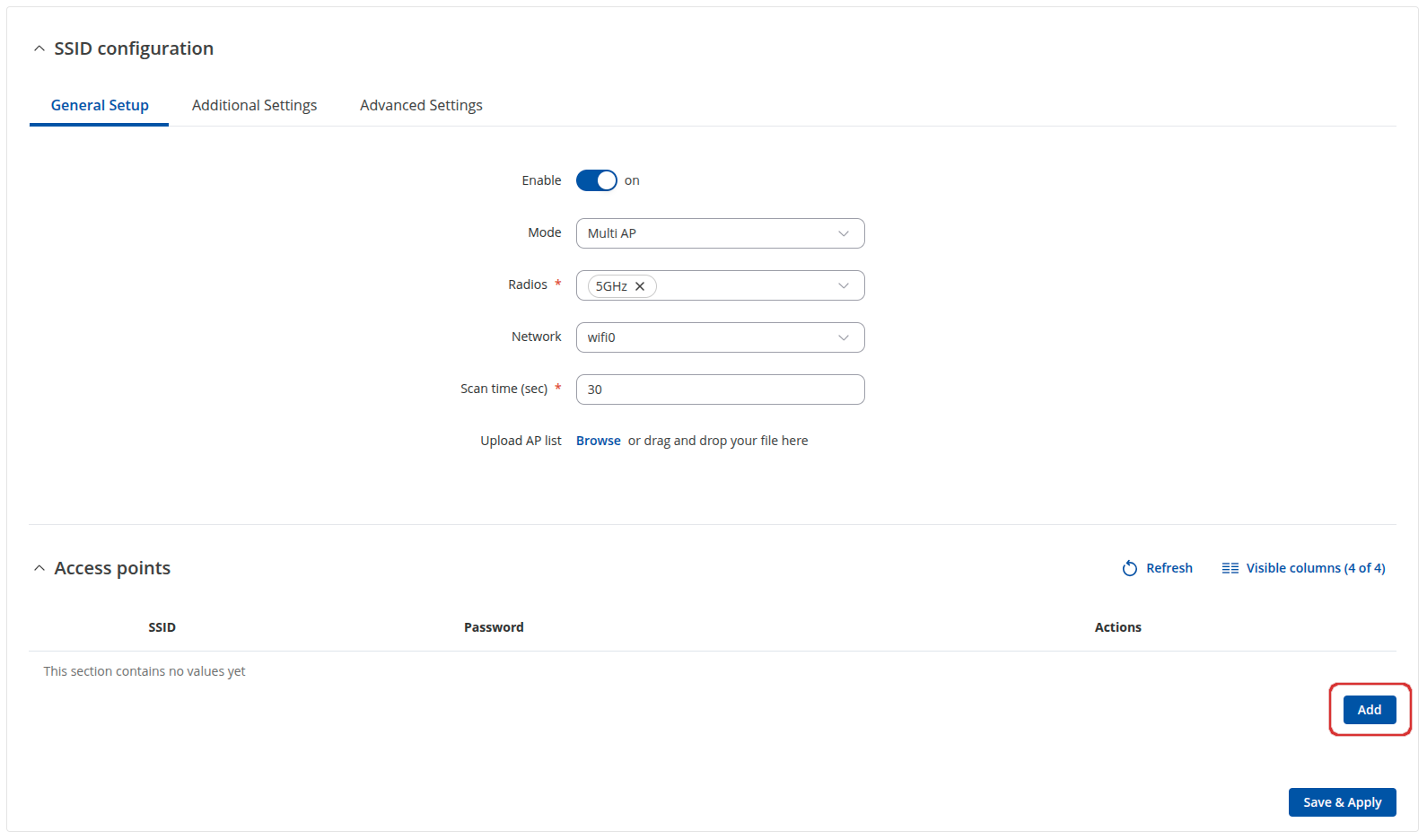
Save & Apply the configuration.
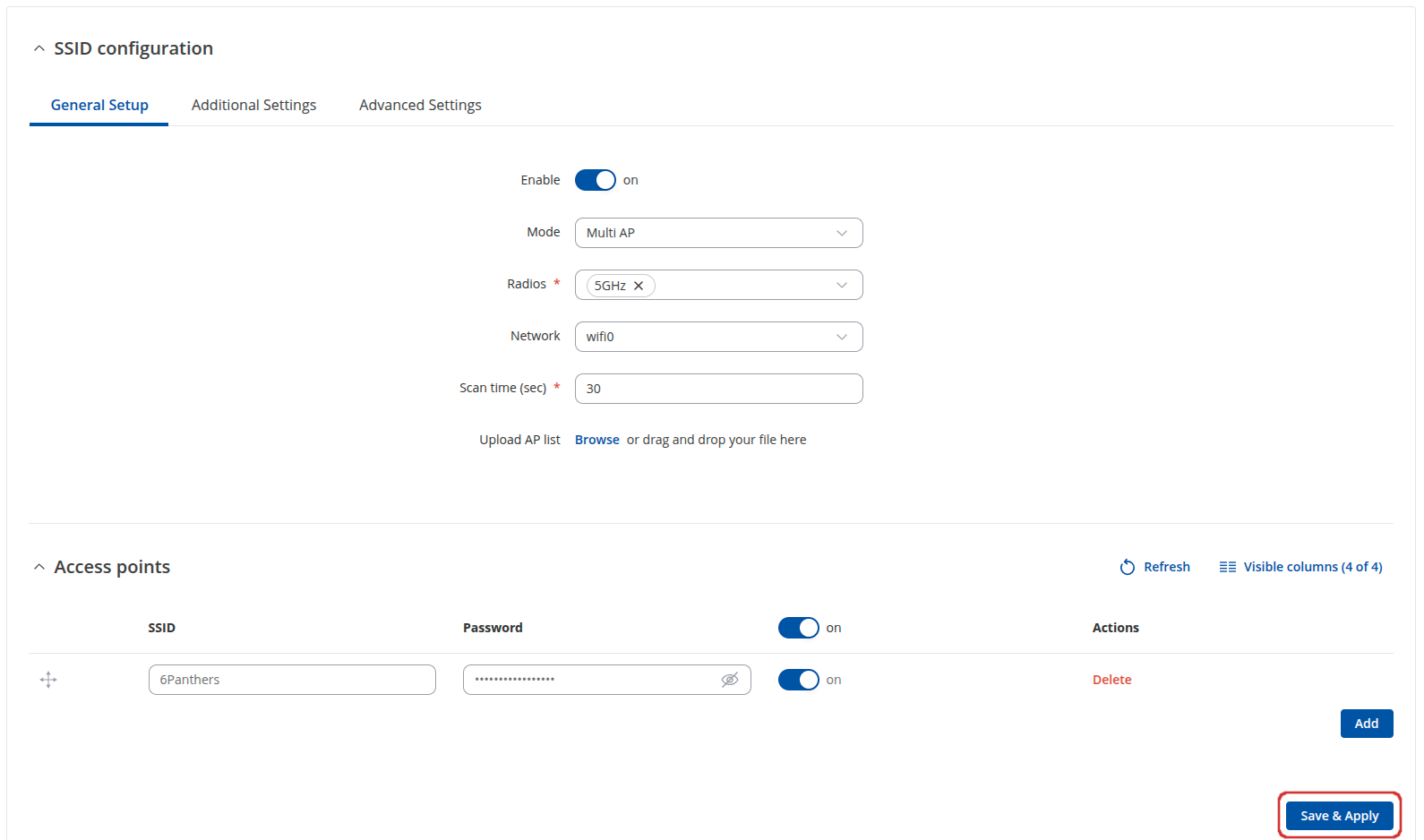
Wait for the network to connect. The Status should change to connected.

If you encounter any issues with network connection please refer to official RUTX11 Manual
Remote Access
OPTION 1: In a Local Network
Use a SSH connection at your PC that is connected to the hotspot provided by Panther:
ssh husarion@10.15.20.3
The default password for user husarion is also husarion.
OPTION 2: Over The Internet (VPN)
If LAN access is not enough, you can access your Panther over the Internet from anywhere in the world with Husarnet. First, you should connect Panther to your internal Wi-Fi network, as described in the previous paragraph.
Once your Panther is connected to your network, you can proceed to configure Husarnet. A full guide on how to do this is here.
Panther ROS Packages
At this stage, your Panther should be up and running, with a remote connection (either LAN or VPN) established from your laptop. Panther is equipped with preinstalled ROS packages within Docker containers, which are set to launch automatically upon boot. For more information on Panther's ROS system, please refer to Software Guide.
ROS nodes running in the containers are accessible at the host operating system level.
Check available ROS topics:
- ROS 2
- ROS
ros2 topic list
The complete architecture of the Panther ROS 2 software is detailed in the Panther ROS 2 API documentation.
rostopic list
The complete architecture of the Panther ROS software is detailed in the Panther ROS API documentation.
Updating Panther Driver Version
Panther ROS packages are frequently updated to improve Panther performance or include new features. To update them to the latest version, first, check the latest stable Docker image version at husarion/husarion-ugv. An example stable tag contains ROS distribution, software version and date, e.g.: jazzy-2.3.1-20250701.
To update driver version please refer to Driver Version Management
Reference Projects
Now you know how to access Panther's ROS nodes from the Linux terminal. Below are some example projects and demos that you can use as a starting point for your own applications.
Find available projects below:
| link | description |
|---|---|
| husarion_ugv_autonomy_ros | Autonomous mapping & navigation demo for Panther. Using navigation2 and slam_toolbox |